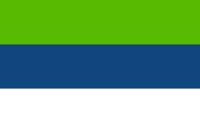Belgorian language: Difference between revisions
Jump to navigation
Jump to search
m (| familycolor = Indo-European | fam1 = [https://en.wikipedia.org/wiki/Indo-European_languages Thuado-Thrismaran languages]) |
|||
| Line 19: | Line 19: | ||
| speakers = [https://en.wikipedia.org/wiki/First_language L1]: 108,715,000 | | speakers = [https://en.wikipedia.org/wiki/First_language L1]: 108,715,000 | ||
| speakers2 = [https://en.wikipedia.org/wiki/Second_language L2]: 23,712,000<br>[https://en.wikipedia.org/wiki/Foreign_language FL]: 3,510,000 | | speakers2 = [https://en.wikipedia.org/wiki/Second_language L2]: 23,712,000<br>[https://en.wikipedia.org/wiki/Foreign_language FL]: 3,510,000 | ||
| familycolor | | familycolor = Indo-European | ||
| fam1 = [https://en.wikipedia.org/wiki/Indo-European_languages Thuado-Thrismaran languages] | |||
| fam2 = [https://en.wikipedia.org/wiki/Balto-Slavic_languages Zarav-Slavic] | | fam2 = [https://en.wikipedia.org/wiki/Balto-Slavic_languages Zarav-Slavic] | ||
| fam3 = [https://en.wikipedia.org/wiki/Slavic_languages Slavic] | | fam3 = [https://en.wikipedia.org/wiki/Slavic_languages Slavic] | ||
Revision as of 09:22, 29 March 2021
This article is incomplete because it is pending further input from participants, or it is a work-in-progress by one author. Please comment on this article's talk page to share your input, comments and questions. Note: To contribute to this article, you may need to seek help from the author(s) of this page. |
| Belgorian language | |
|---|---|
| Monteblanqoise | |
| Ⲃⲓⲉⲗⲅⲟⲣϣⲧⲓⲓⲛⲁ | |
 Belgorian cultural flag | |
| Pronunciation | /biɛlgorʃtʲina/ |
| Native to | |
| Region | Slavic Belt in Thuadia |
| Ethnicity | Belgorian Slavs |
Native speakers | L1: 108,715,000 L2: 23,712,000 FL: 3,510,000 |
Thuado-Thrismaran languages
| |
Standard forms | The New Grammar for the Monteblanquoise language
|
| Protopolyash | |
| Official status | |
Official language in | |
Recognised minority language in | |
| Language codes | |
| ISO 639-1 | MB |
| ISO 639-2 | MBG |
| ISO 639-3 | MBG |
| File:BelgorianLangMap.png Distribution of the language Absolute majority >30% of native speakers | |
Alphabet
| Ⲁ ⲁ /a/ |
Ⲃ ⲃ /b/ |
Ⲅ ⲅ /g/ |
Ⲇ ⲇ /d/ |
ⲆⲒ ⲇⲓ /dʲ ~ ɟ/ |
Ⲉ ⲉ /ɛ ~ e/ |
Ⲋ ⲋ -Silent- |
Ⲍ ⲍ /z/ |
Ⲏ ⲏ /j/ |
Ⲑ ⲑ /ð ~ θ/ |
| Ⲓ ⲓ /i ~ j/ |
Ⲕ ⲕ /k/ |
Ⲗ ⲗ /l/ |
Ⲙ ⲙ /m/ |
Ⲛ ⲛ /n/ |
ⲚⲒ ⲛⲓ /nʲ ~ ɲ/ |
Ⲝ ⲝ /ks/ |
Ⲟ ⲟ /ɔ ~ o/ |
Ⲡ ⲡ /p/ |
Ⲣ ⲣ /r ~ ɾ/ |
| Ⲥ ⲥ /s/ |
Ⲧ ⲧ /t/ |
ⲦⲒ ⲧⲓ /tʲ ~ c/ |
Ⲩ ⲩ /u/ |
Ⲫ ⲫ /pʰ ~ f/ |
Ⲭ ⲭ /x/ |
Ⲯ ⲯ /v/ |
Ⲱ ⲱ /o̞ː/ |
Ϣ ϣ /ʃ/ |
Ϥ ϥ /f/ |
| Ϧ ϧ /x/ |
Ⳉ ⳉ /x/ |
Ϩ ϩ /h/ |
Ϫ ϫ /ʧ/ |
Ϭ ϭ /ʒ/ |
Ϯ ϯ /ti/ |
Ⳁ ⳁ -Silent- |
- ↑ Official languages of the Sekidean Union are official languages of countries that are members. Therefore, Belgorian is considered an official language, although on the international basis, Common is used the most.